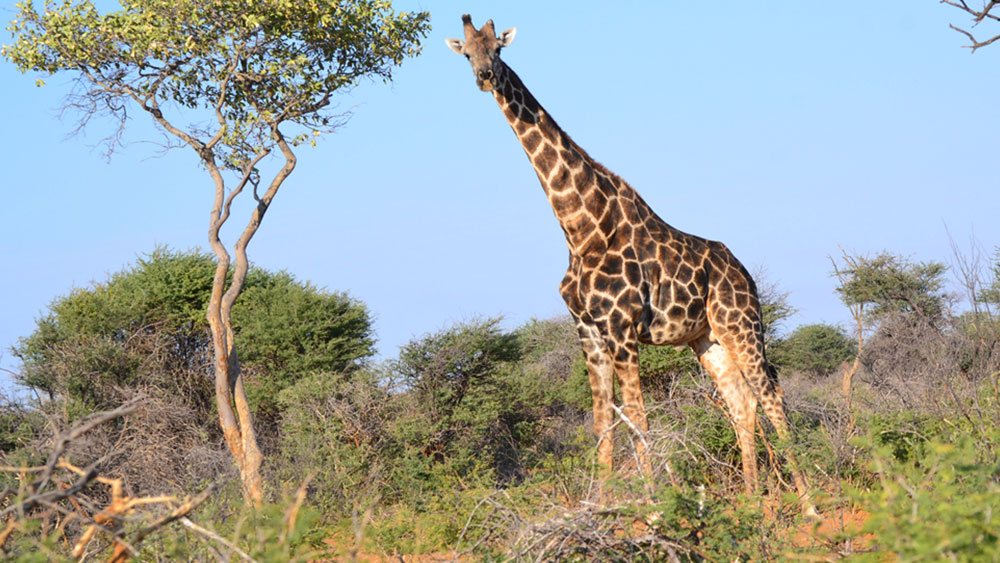Giraffa giraffa at Bellebeno Game Farm
-

- by Elizabeth Pius December 2, 2019

The giraffe project is one of CCF’s ongoing projects, which started back in 2003. This year the project became my honors thesis at Namibia University of Science and Technology (NUST), titled “Giraffe (Giraffa giraffa) population structure and spatial distribution in Bellebenno game farm”.
The study took place on one of CCF’s farms called Bellebenno. This farm is game-fenced and covers about 7300 hectares. The area is relatively flat with red Kalahari sands and the habitat type is open savannah. Four artificial waterholes on the farm provide water to wildlife throughout the year. Bellebenno is home to various wildlife species including a thriving population of giraffe (Giraffa giraffa).
The objective of the project was to study giraffe’s social structure (group sizes, age and sex ratio) and their spatial distribution between the wet and dry seasons. For data collection, two driving transects were established in Bellebenno and each transect was sampled twice per season. During sampling, all observed giraffe groups were recorded. Information noted included the number of individuals per group, sex ratio, age ratio and GPS coordinates.
The study found that giraffe group sizes vary, ranging from 1 to 17 individuals in a group.In terms of age and sex ratio, adults are dominating the population. This could be due to lack of large predators like lions (Panthera leo) and spotted hyenas (Crocuta crocuta), which are the two predators believed to be giraffes’ primary predators (Dagg and Foster 1976 as cited in Lee, 2015). There are more males than females in the population which could be suppressing the calving rate.
Giraffe group distribution tends to vary seasonally as they respond to seasonal changes in food availability (Fennesy, 2004). However, this project found that groups seem to be distributed around the farm regardless of seasons. Drought could have influenced this result as the small amount of rain the farm received during 2019 may not have made a difference in food availability between wet and dry season. The artificial waterholes may have also influenced the results, as they are equally distributed in the area. Prior studies have found that, giraffes feed near waterholes during the dry season.
Thanks to Dr. Marker (CCF) for the opportunity to be involved in this project and my colleagues and supervisor for their assistance with data collection and writing up.
Related Reading
-
August 27, 2025
Sniffing Out Stories with the Scat Detection Dog Team




